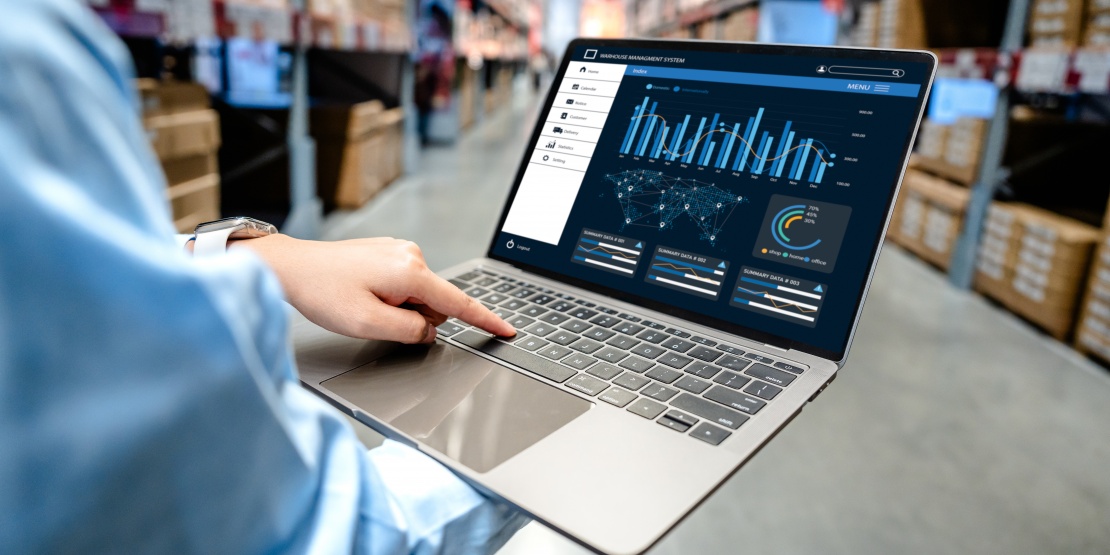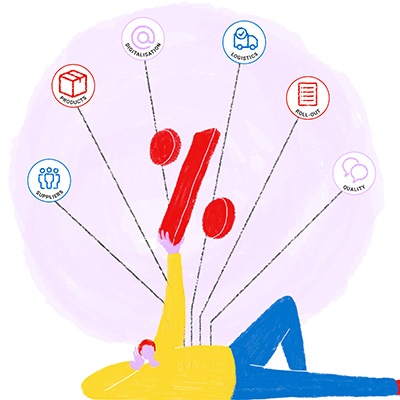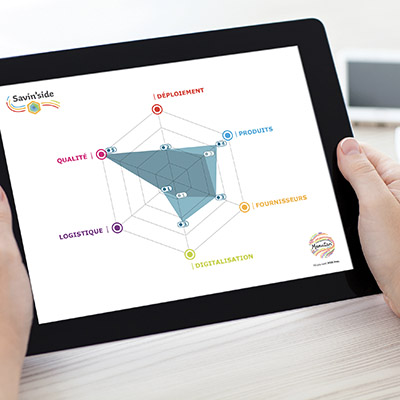The digitalisation of procurement is now establishing itself as a strategic lever for organisations wishing to optimise their costs, gain agility and strengthen their competitiveness. The procurement system positions itself as an essential solution to support this transformation.
What is a procurement system?
A procurement system is a software solution dedicated to managing a company's procurement processes. It enables the centralisation of all data and flows relating to procurement, from internal requests through to payment tracking and supplier performance monitoring. It is not limited to simple management software: it constitutes a genuine digital environment for procurement departments.
A procurement system notably enables you to:
- Centralise all data relating to procurement and suppliers;
- Automate request, ordering and invoicing processes;
- Analyse expenditure and generate advanced reporting;
- Manage contracts and tender processes;
- Track supplier performance;
- Integrate with other systems such as ERP (Enterprise Resource Planning), SRM (Supplier Relationship Management) or P2P (Procure-to-Pay) solutions;
- Secure and track all transactions.
What are the key functionalities of a procurement system?
A high-performing procurement system is distinguished by the richness of its functionalities, which cover all stages of the procurement life cycle:
- Data centralisation: All procurement information, suppliers, contracts and order histories are grouped together in a single platform, facilitating access and management;
- Process automation: Repetitive tasks (request validation, order issuing, invoice matching) are automated, reducing error risks and processing times;
- Expenditure analysis: Analysis and reporting tools enable real-time spend tracking, identification of optimisation levers and procurement performance management;
- Contract and tender management: The procurement system facilitates contract life cycle management, from drafting to signing, including deadline monitoring and renewals;
- Supplier performance tracking: Key performance indicators (KPIs) enable evaluation of partner quality, compliance and reliability;
- Integration with other systems: The procurement system interfaces with ERP, SRM and P2P solutions to ensure data consistency and streamline exchanges between departments;
- Security and traceability: All operations are tracked, ensuring regulatory compliance and data security.
Why optimise your procurement processes with a procurement system?
Procurement optimisation no longer relies solely on pricing negotiations. It now involves comprehensive process management and data management.
Here are the main benefits of a procurement system:
- Cost savings: Through expenditure analysis, supplier rationalisation and automation of low-value-added tasks;
- Productivity improvement: Procurement teams save time on administrative tasks and can focus on higher-value missions (innovation, sourcing, CSR...);
- Regulatory compliance: Better management of legal and regulatory risks (GDPR, quality standards, CSR obligations);
- Data and process security: Information centralisation, secure access, complete traceability;
- Better collaboration: Streamlined exchanges between procurement, finance, legal departments, and with suppliers.
What is the added value of a sustainable procurement system?
A sustainable procurement system integrates environmental, social and ethical criteria from supplier selection onwards. It thus supports the company's CSR strategy, whilst strengthening its image and capacity to meet stakeholder expectations.
A good procurement system notably enables you to:
- Evaluate suppliers on extra-financial criteria;
- Centralise CSR certifications and commitments ;
- Manage a sustainable procurement policy aligned with sustainable development goals.
How to choose and deploy a procurement system adapted to your company?
Implementing a procurement system is not simply about installing any procurement software. It is a strategic project that involves all stakeholders and requires thorough reflection on objectives, processes and change management.
What criteria for choosing your procurement system properly?
To select the most suitable procurement system, several criteria must be analysed:
- The company's specific needs: Procurement volume, process complexity, number of suppliers, etc.;
- Interoperability with existing solutions (ERP, SRM, finance tools);
- Proposed functionalities: Contract management, tender management, supplier management, etc.;
- The capacity to centralise data whilst facilitating access;
- Interface intuitiveness to encourage user adoption;
- The software's capacity to support CSR challenges.
It is essential to involve procurement teams, but also IT Directors, finance and business users in the selection process.
What stages for implementing a procurement system?
To guarantee solution adoption and maximise its impact, it is essential to follow a rigorous approach, structured in several key stages. Here are the main stages to follow to successfully deploy a procurement system:
- Audit of existing processes: Identify obstacles, duplications and non-compliance areas;
- Project scoping: Define objectives, budget, and internal resources;
- Writing a clear and evolving specification document;
- Supplier consultation and structured tender processes;
- Solution selection: In line with functional and technical requirements;
- Pilot phase and user training;
- Progressive deployment and change management;
- Performance monitoring and continuous adjustments.
What are the prospects for procurement systems?
Procurement systems are evolving rapidly to support organisational transformation and the new strategic imperatives of procurement departments. Process automation is gaining precision, reducing manual processes in favour of data-driven management. Artificial intelligence is being integrated to anticipate needs, optimise costs and strengthen risk detection. Predictive analytics is becoming a strategic planning lever. Procurement systems now connect seamlessly to ERPs, P2P and SRM solutions, creating a unified and coherent architecture. This technological convergence favours a global and instantaneous view of the procurement supply chain. The role of the procurement function is evolving, with teams now positioned as drivers of sustainable performance, innovation and strategic management. As Patrick Chabannes (former Senior Solution Strategist at Determine) emphasises, "Procurement IS will be able to push recommendations to users taking into account personal business rules by creating interactive situations. The buyer then asks the right questions: What happened? What did they find? What are my own competitors benefiting from by working with these sources?"[1]
Case study: implementing a procurement system and results achieved
A large-scale agribusiness company, with several production sites in Europe, decided to transform its procurement management to gain competitiveness. It operates in more than 10 countries, employs approximately 5,000 people and collaborates with an extensive network of suppliers spread across several continents. Its procurement department managed more than 500 suppliers and tens of thousands of order lines each year, which created significant complexity in daily supply management.
Its objective: Rationalise its supplier panel, centralise data, automate routine operations and improve global visibility on expenditure to facilitate strategic decision-making.
Thanks to implementing a modern procurement system, the company was able to:
- Analyse annual consumption data to better understand its expenditure and distribution;
- Identify and substitute 16 non-strategic suppliers, which enabled it to rationalise its panel and strengthen relationships with key partners;
- Reduce management costs by €16,000 (around £13,900) from the first year by automating processes (orders, validations, invoices) and eliminating low-value-added tasks;
- Track supplier performance in real-time through shared dashboards, facilitating supplier reviews and negotiations.
The results achieved are as follows:
- Significant reduction in procurement costs;
- Acceleration of validation and ordering cycles;
- Better supplier risk management;
- Increased satisfaction amongst procurement teams and internal users.
Adopting a high-performing and sustainable procurement system constitutes much more than a simple IT project. It is a strategic approach that enables alignment of operational, financial and responsible company objectives.
[1] Patrick, CHABANNES (Former Senior Solution Strategist at Determine)









